The unsung hero of the worst aviation disaster of all time
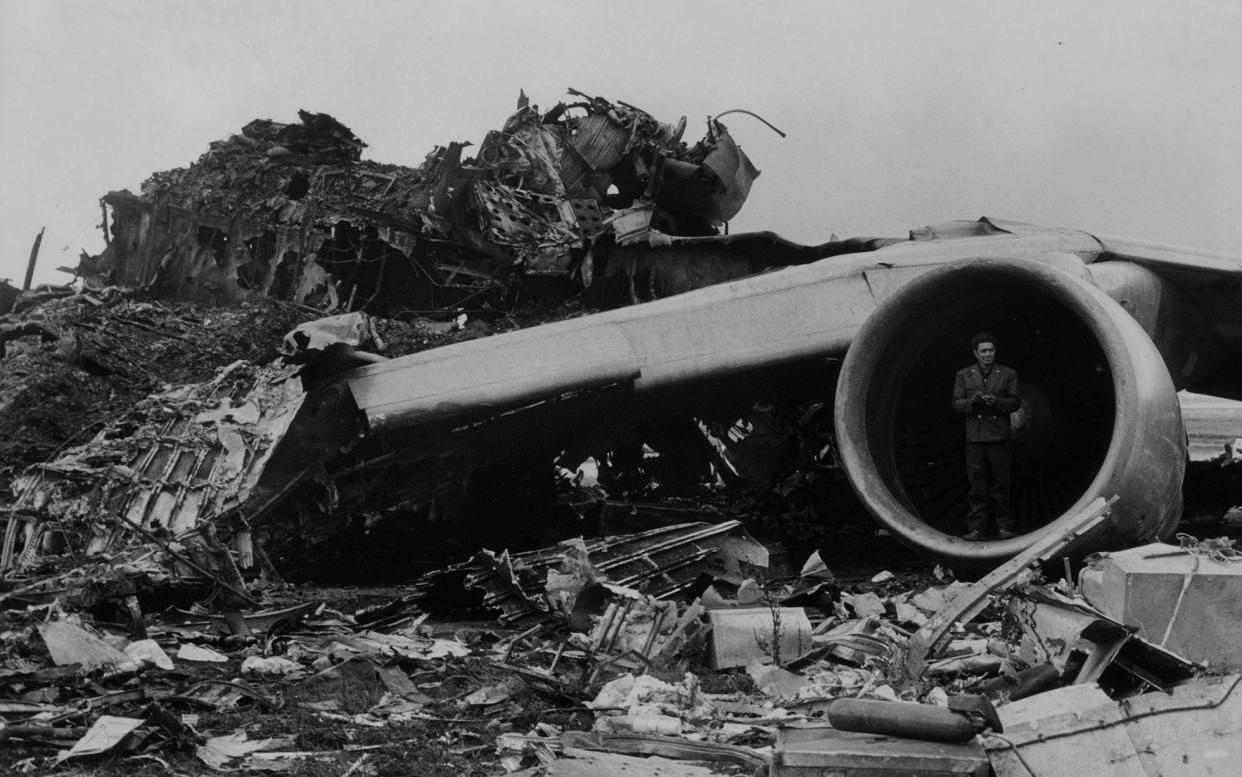
On this day in 1977, at Tenerife-North Airport (formerly Los Rodeos), two Boeing 747s - one belonging to KLM, the other to Pan Am - collided on a foggy runway. Five hundred and eighty-three people were killed in what remains the deadliest air disaster in history.
Telegraph Travel has previously examined what went wrong. Patrick Smith, a US pilot and author of Cockpit Confidential, explained that “most airplane crashes result not from a single error or failure, but from a chain of improbable errors and failures, together with a stroke or two of really bad luck.” And this was certainly the case in Tenerife. Factors that contributed to the disaster included terrorism (a separatist bomb plot at Las Palmas Airport meant a clutch of aircraft were diverted to a normally sleepy Los Rodeos), weather (a heavy blanket of fog arrived just before the accident), technology (Tenerife had no ground tracking radar and an ill-equipped rescue team, while static on the two-way radios used to communicate obscured critical messages), and pilot error (a route clearance was mistaken by Jacob Van Zanten, the KLM captain, for a takeoff clearance), among others.
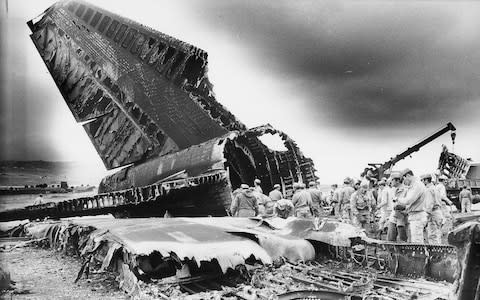
Smith’s account focuses on the testimony of Bob Bragg, the Pan Am first officer who survived the crash (all of those on the KLM plane perished) having been forced to jump the equivalent of three storeys from the cockpit to the ground below.
It’s a gripping version of events, which can be read in full here, but it fails to mention perhaps the greatest hero to emerge from the horror: Dorothy Kelly.
A 35-year-old Pan Am senior flight attendant, she was one of 13 people tasked with taking care of the aircraft’s 380 passengers. And after a long delay at Tenerife while they waited for Las Palmas to reopen, they were starting to get irritable. “We were so busy during the whole time on the ground,” she would later recall. “The ground staff wouldn’t let the passengers disembark because there were so many aircraft at this tiny airport and the terminal was packed. After a while the passengers became restless and thirsty - most of these people had come all the way from California and had been up all night.”
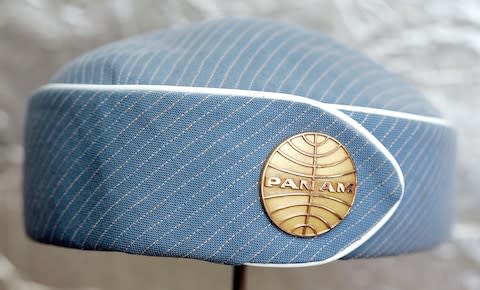
Eventually Pan Am’s 747 was cleared to leave, but before doing so - and because of congestion blocking the normal taxi route - it was told to move down the runway and wait in one of the exits. Once the preceding departure - operated by KLM - had left, it could continue its journey to the end of the runway.
Unable to find the correct exit in the fog, the Pan Am pilots missed their waiting zone. Meanwhile, the KLM jet, failing to understand commands from the control tower, began barrelling down the runway in the opposite direction. By the time the two pilots spotted each other, it was too late. The Pan Am captain, Victor Grubbs, made a futile attempt to veer off the runway; Jacob Van Zanten tried to take off, but the undercarriage and engines of KLM’s 747 sliced into the top of the other jet. The KLM plane hit the ground 150 metres beyond the point of collision, and slid down the runway for a further 300 metres. Fire engulfed it before any of its 268 passengers could escape. The Pan Am jet, meanwhile, was completely torn apart.
Los Rodeos air crash
“I was in the front of the airplane standing by a door, and not in a position where I could see out of the plane,” said Kelly. “We were taxiing and in those days there were no regulations that we had to be strapped into our seats as soon as the aircraft moved. I still had some duties and someone had just handed me a cup of coffee. All of a sudden things were flying around the airplane. I thought a bomb may have exploded. Everything just changed in a moment.”
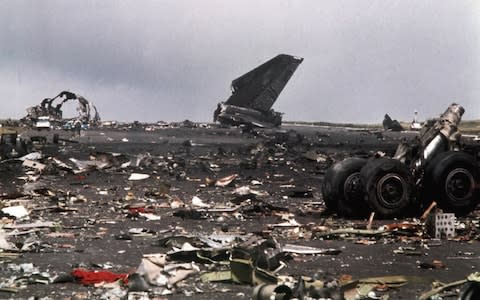
The floor collapsed and Kelly was hit on the head and briefly knocked unconscious. She woke in the cargo hold and managed to crawl into the nose of the aircraft.
“There were explosions behind me and I realised the only way out was up. The floor started giving way as I climbed out,” she said.
“The KLM plane had peeled off the top of the Pan Am plane, just like peeling off the top of a sardine can, the top had rolled right off. Everyone in the top section had gone. There was nothing around that looked like anything had looked before - just jagged metal and small pieces of debris.”
Top 10 | Deadliest air disasters of all time
Instinctively, her safety training kicked in and she started corralling dazed and confused survivors, many of whom were elderly holidaymakers that had been on their way to join a cruise. The emergency exits had been destroyed, so she urged them to jump from the plane through an opening in the side.
“I looked over, and it was like looking out of a second floor window,” she said. “I was really scared because my feet were bare and you saw nothing but jagged metal down there. I said to myself ‘Oh, my God, we’ve survived this and we are going to kill ourselves jumping down on that debris’.”
With fire and small explosions sweeping through the wreckage, she too leapt to the ground, breaking her elbow and fracturing her skull in the process. She then concentrated on moving those passengers that had escaped the plane - there were many jumping down from another hole near the left wing - away from the inferno. “I did what I could,” she said modestly, though a witness later said she “looked like Road Runner dashing backwards at 50 miles per hour.”
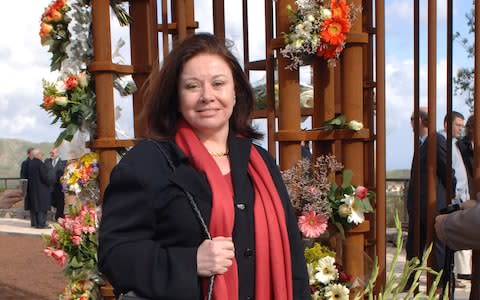
She added: “I remember one man who had had his clothes completely blown off, just wandering around in a daze. I had to keep pushing him off to the side and away from the plane. But he kept wandering back.”
As she ran back and forth she noticed something white near the front of the aircraft. It was the starched shirt of Captain Grubbs.
“I saw the captain on his knees, not moving. I thought he had broken his legs. There were other people around with broken limbs. I grabbed him under the arms and pulled and kept encouraging him to keep going. I feared the fuselage would fall down on us. I kept pushing and pulling and then dropped him on to the runway. At that point the front part of the plane where we had just been under started to move, there was a groaning and moaning and all of a sudden it just sort of settled over on its side, just like a great beached whale.”
The most heroic airline pilots of all time
Kelly and first officer Bragg, nursing a broken ankle, continued to encourage passengers to leap to safety, but eventually the flow of survivors stopped. “Obviously the damage was so great that not everybody could get to that opening over the wing. My worst memory was watching the people banging on the windows and listening to them screaming. We couldn’t get up to that part of the airplane to get them out. I had nightmares for many years.” A few minutes later, the plane’s central fuel tank exploded, ending any hope of retrieving them.
Sixty-one survived the disaster, but it would have certainly been fewer without Kelly’s efforts. The airport rescue team, initially unaware that two aircraft were involved in the accident, finally arrived on the scene, and authorities opened the security gates and urged anyone with a vehicle to offer assistance. Bragg would recount the surreal moment when, surrounded by injured survivors and watching his plane go up in flames, a taxi pulled up out of nowhere.
The truth behind the 10 deadliest aviation disasters of all time
Their heroism didn’t end there, however. Both Bragg and Kelly insisted, despite their own injuries, on attending the survivors in hospital.
“It was really gruesome but the adrenaline was going and I guess that’s how people get through war and similar things,” said Kelly. “You don’t stop to think about how this is affecting you, there’s a job there and you have to do it. They were still our passengers.”
Kelly was decorated for her bravery and, though she wouldn’t fly again for a year and a half, on doctor’s orders, returned to the sky with Pan Am.
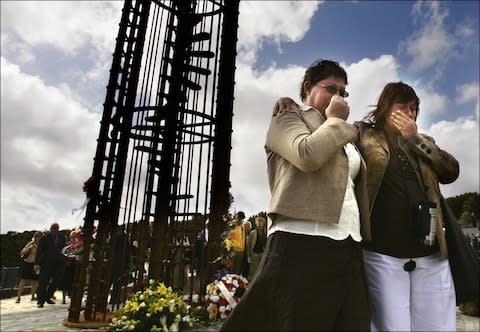
The story has a morbid addendum. In 1988, she narrowly avoided another high-profile disaster when a colleague asked her to switch flights and work on a service from London to New York. She declined, having just made plans to see her family. The flight - Pan Am 103 - was blown up over Lockerbie.
Quotes taken from ‘Fasten Your Seat Belts! History and Heroism in the Pan Am Cabin’, an interview with Dorothy Kelly by Sheila Collis for the website Island Connections in 2007, and the documentary series Blackbox.

